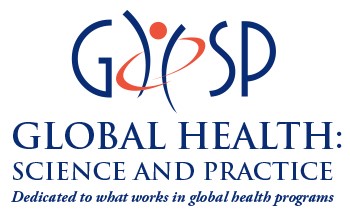Immunization/Vaccines
- Early Lessons From Ethiopia in Establishing a Data Triangulation Process to Analyze Immunization Program and Supply Data for Decision Making
Health managers in Ethiopia used a data triangulation tool and process to prompt decision making and meaningful actions to improve immunization services. Immunization managers interested in incorporating data triangulation analyses into their current data review systems will need to determine practical, feasible means for operationalization, preferably through a collaborative, iterative process with users.
- Cost of Delivering Tetanus Toxoid and Tetanus-Diphtheria Vaccination in Vietnam and the Budget Impact of Proposed Changes to the Schedule
This study shows that replacing tetanus toxoid vaccination in Vietnam for girls aged 15–16 years in high-risk areas with routine tetanus-diphtheria vaccination for children aged 7 years mainly through a school-based delivery strategy will likely result in immunization cost savings.
- Role of Information Sources in Vaccination Uptake: Insights From a Cross-Sectional Household Survey in Sierra Leone, 2019
Our findings suggest that health workers and faith leaders are important sources of information to deliver vaccination messages, given their strong association with vaccination confidence and uptake. In this context, vaccination promotion efforts that integrate faith leaders and health workers may help increase vaccination uptake.
- Key Factors Influencing Use of Immunization Cost Evidence in Country Planning and Budgeting Processes: Experiences From Indonesia, Tanzania, and Vietnam
The evidence to policy and practice facilitated process represents a journey that countries and their development partners can embark on to increase the likelihood that health policy makers will use cost evidence for policy making and planning.
- Implementation Approaches for Introducing and Overcoming Barriers to Hepatitis B Birth-Dose Vaccine in sub-Saharan Africa
We discuss determinants of hepatitis B birth-dose vaccine uptake in sub-Saharan Africa countries at the policy, facility, and community levels and propose solutions to known barriers of hepatitis B vaccine introduction in low- and middle-income countries.
- Maintaining Polio-Free Status in Indonesia During the COVID-19 Pandemic
Despite the negative impact that the COVID-19 pandemic has had on polio eradication efforts, ensuring the high coverage of polio immunization and high performance of surveillance are essential to maintaining Indonesia’s polio-free status and the reaching the 2023 global polio eradication target.
- COVID-19 Partners Platform—Accelerating Response by Coordinating Plans, Needs, and Contributions During Public Health Emergencies: COVID-19 Vaccines Use Case
The World Health Organization COVID-19 Partners Platform represents the first step towards a new model of health crisis information sharing across stakeholders and could evolve into an engagement mechanism of choice for future cross-border public health emergencies.
- Applying Adult Learning Best Practices to Design Immunization Training for Health Care Workers in Ghana
Best practices of adult learning were used to develop a training of trainers program for the Ghana Health Service immunization workforce. The program supported translating learning to behavior change, used class time for practice-teaching and action plan development, linked formal instruction with specific activities, and offered follow-up mentorship.
- Evaluation of the Impact of Immunization Second Year of Life Training Interventions on Health Care Workers in Ghana
Applying performance-based training interventions that follow adult learning principles and include follow-up activities after training may help to solve specific performance problems and improve health care workers’ performance in immunization service delivery. These strategies facilitate learning, minimize the forgetting curve for health care workers, and should be considered as a standard practice for future training interventions.
- Income Inequalities in Hepatitis B Vaccination and Willingness to Pay Among Women of Reproductive Age in Hanoi, Vietnam
Many countries use a fee-for-service model for hepatitis B vaccination, which amplifies health disparities across socioeconomic statuses and contributes to inequalities in HBV vaccination rates. We examined the role of household income on women’s willingness to pay and the amount they are willing to pay for HBV vaccination to identify a more optimized payment scheme and equitable access across all income groups.

